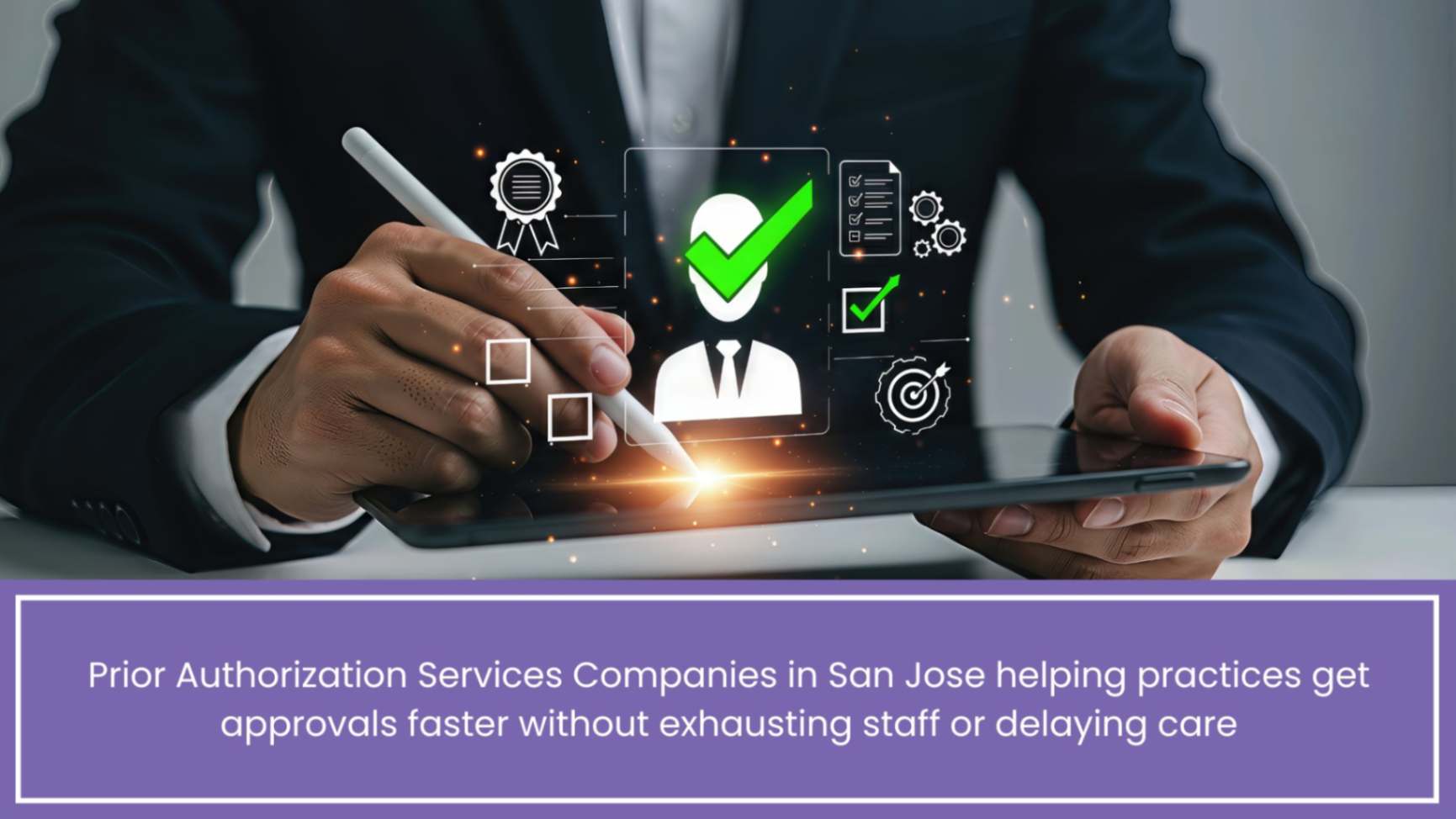Challenges in Claim Submission and How to Overcome Them
In the complex world of healthcare billing, prior authorizations (PAs) stand out as a significant hurdle. They are a primary source of administrative burden, delaying patient care and leading to a cascade of claim rejections. The good news is that this laborious procedure is being transformed by Challenges in Claim Submission and How to Overcome Them. By combining these technologies, practices can enhance their bottom line, establish strong claim rejection management tactics, and drastically eliminate frequent billing errors in the healthcare industry.
Table of Contents
A Beginner’s Guide to Optimizing Healthcare Claim Submissions
Optimizing healthcare claim submissions begins with understanding the entire revenue cycle management, from patient registration to final payment. The objective is to file a clean claim. A clean claim is one that is correct and comprehensive from the start. Less time and resources are needed for resubmissions, appeals, and follow-ups. This is as a result of this.
The procedure starts for newcomers with meticulous data collection during the patient registration phase. Prior to the services being provided, confirm the patient’s eligibility, insurance details, and demographics. The key to preventing medical billing claim submission errors is this proactive strategy. Next, focus on accurate medical coding, ensuring that all services are transformed into HCPCS, ICD-10, and CPT codes correctly. Lastly, put in place a thorough pre-submission review procedure. Many Prior Auth Automation Tools & Techniques include pre-submission scrubbers that check for common errors, drastically improving the chances of a clean claim.
Top 10 Claim Submission Errors and How to Avoid Them
Common mistakes can be made by even seasoned billers. Reducing claim denials requires recognizing and fixing these errors. Below are the list of 10 frequent perpetrators:
- Inaccurate information about patients includes conflicting identities, the time of conception, or addresses.
Approach: Use the patient’s ID and insurance card to verify at every appointment.
- Insurance information that is missing or inaccurate, such as out-of-date policy numbers, erroneous group IDs, or inactive plans.
Pre-authorization and real-time eligibility checks are the answer.
- Invalid or Missing Prior Authorization: Services rendered without necessary pre-approval.
Solution: Implement Prior Auth Automation Tools & Techniques to track and manage all authorizations.
- Coding Errors(CPT, ICD-10, HCPCS) include out-of-date codes, mismatched codes, and unbundled services.
Solution: Regular coder training and updated coding software.
- Absence of Medical Necessity: The billed service is not adequately supported by the documentation.
The answer is comprehensive clinical documentation that complies with payer regulations.
- Repeatedly submitting the same claim is known as duplicate billing.
Solution: Robust practice management software with claim tracking.
- Timely Filing Limit Exceeded: Submitting claims after the payer’s deadline.
Solution: Establish a strict internal claim submission schedule.
- Unsupported Modifiers: Using modifiers incorrectly or without proper documentation.
Solution: Regular review of modifier guidelines.
- When a service is invoiced for at a different location than what was stated, this is known as an inaccurate POS code.
Solution: Verify POS for each service.
- Unmatched NPI or Tax ID: Errors in provider identification numbers.
Solution: Double-check all provider credentials in the billing system.
Why Your Medical Claims Get Rejected—And How to Fix It
Rejecting claims is not a random occurrence; rather, it is a sign of deeper problems with your billing procedure. Effective claim denial management solutions require an awareness of the underlying causes in addition to the specific faults mentioned above.
A primary cause is the absence of efficient processes. Information gaps are unavoidable if your billing team, clinical personnel, and front desk work in silos. Prior Auth Automation Tools & Techniques can bridge these gaps by creating a centralized platform for all PA-related information. Outdated payer regulations are another frequent problem. A refusal today could result from what was permissible last year due to the regular changes in payer regulations. Regular updates and access to current payer matrices are vital.
To fix rejections, conduct a thorough root cause analysis for recurring denials. Categorize denials by reason code and payer. This data will highlight systemic problems that need addressing. For instance, if “missing prior authorization” is a top denial reason, it signals an immediate need to invest in or optimize your Prior Auth Automation Tools & Techniques.
Ultimate Checklist for Clean Claim Submission
A comprehensive Healthcare Claim Submission Checklist is an invaluable asset. It is a final measure prior to submitting a claim.
- Examples of verified patient information include name, DOB, address, and contact information. These details are considered essential for patient records.
- Confirm insurance eligibility. This includes confirming the copay/deductible, coverage details, and the current policy.
- For all necessary services, prior authorization was obtained and confirmed.
- Precise CPT, ICD-10, and HCPCS codes: medically required and appropriately associated.
- Correct Modifiers Applied: If applicable and documented.
- Provider Information Correct: NPI, Tax ID, facility ID.
- Place of Service Code Correct.
- Date of Service Accurate.
- Timely Filing Adhered To.
- Supporting Documentation Attached (if required): For complex cases or appeals.
- Claim Scrubber Run: Making use of automated technologies to check for errors prior to submission.
Which is better for your practice submitting claims electronically or manually?
In today’s digital age, the debate between manual and electronic claim submission is largely settled. Electronic claims (EDI) are overwhelmingly superior.
Manual Submission: Involves printing paper claims, mailing them, and awaiting snail mail responses. It’s slow, prone to claim submission errors in medical billing (e.g., illegible handwriting, lost mail), and has high administrative costs. It offers minimal control over the submission process once mailed.
Using a clearinghouse to send claims online is known as electronic submission. Because of automatic validation checks, it is quicker, more accurate, lowers mailing costs, and offers real-time tracking. Prior Auth Automation Tools & Techniques are inherently integrated with electronic submission workflows, further enhancing efficiency.
For almost all practices, electronic submission is the only viable option for efficiency, accuracy, and robust claim denial management strategies. Small, solo practices might occasionally use manual for very specific, rare payer situations, but it should not be the primary method.
5 Proven Strategies to Improve Claim Acceptance Rates
1.Automate Prior Authorizations: This is paramount. Manual PA processes are notorious for delays and errors. Prior Auth Automation Tools & Techniques can automatically check requirements, submit requests, and track approvals, significantly reducing one of the biggest reasons for claim rejections.
2.Implement Robust Pre-Claim Scrubbing: Utilize software that reviews claims for errors before submission. This catches common billing mistakes in healthcare proactively.
3.Train your billing and clinical staff about payer regulations, code modifications, and the best ways to document and obtain prior authorization. It will guarantee that your staff is knowledgeable about and capable of managing these crucial facets of medical billing.
4.Use payer portals to confirm eligibility and check the status of claims in real time. Appealing denials can also be done through these portals, which are specific to each payer.
5.Analyze Denial Trends: Don’t just resubmit. Understand why claims are being denied. Your claim denial management tactics are informed by this data-driven strategy, which also helps you avoid mistakes in the future. For example, you’ll know to amend your documentation if the “Most Overlooked Reasons for Claim Denials in 2025” list concerns with changed medical necessity requirements.
How to Build an Error-Free Medical Billing Workflow
The goal of developing an error-free medical billing workflow is to establish a methodical, integrated procedure.
- Front desk: Initial eligibility verification, accurate insurance and demographic intake.
- Clinical Staff: Thorough and timely documentation that supports medical necessity and codes.
- Coding Team: Accurate coding, ensuring proper linkage between diagnosis and procedure codes.
- Prior Authorization Team (or automated system): Proactive PA submission and tracking. This is where Prior Auth Automation Tools & Techniques are revolutionary.
- Billing Team: Pre-submission scrubbing, electronic claim submission, real-time claim status monitoring.
- Denial Management Team: Prompt denial analysis, correction, and appeal submission.
- Cross-training and regular contact between these areas are crucial. The foundation of such a workflow is an integrated practice management system that enables smooth information flow.
Are Claim Rejections Killing Your Revenue? Here’s What You Can Do
Yes, rampant claim rejections are a direct drain on your revenue. Each denied claim represents loss in revenue, increased administrative costs for rework, and delayed cash flow.
What you can do:
- Invest in technology: Your first line of defense should be Prior Auth Automation Tools & Techniques.
- Workflow optimization involves locating bottlenecks and streamlining procedures.
- Encourage your group: Continued instruction and resource access should be made available.
- Interact with payers: Learn about their unique needs and cultivate a rapport.
- Keep an eye on your key performance metrics (KPIs): To spot problems early, keep track of your days in A/R, clean claim rate, and rejection rate.
Most Overlooked Reasons for Claim Denials in 2025
As we move into 2025, some often-overlooked reasons for denials may become more prominent:
- Inability to Adjust to New Telehealth Payer Policies: Even though telehealth is increasingly well-established, payer policies for particular services are still changing.
- Value-Based Care Models Lack Adequate Documentation: Documentation demonstrating quality outcomes and care coordination may come under more scrutiny as payers’ priorities change.
- Missing Social Determinants of Health screening data may affect future quality incentives or even particular billing codes, even though it isn’t always directly related to denials.
- Ignoring Medically Unlikely Edits and NCCI Edits: These are updated frequently, and if you don’t follow them, you risk exceeding limitations or getting automated denials for unbundled services.
- Issues with Provider Credentialing: Claims may be silently denied when expired licenses, unenrolled providers, or inaccurate NPIs for particular services are cited.
How can Prior Auth Automation Tools & Techniques reduce claim rejections?
By proactively verifying authorization criteria, submitting requests electronically, monitoring approval statuses, and warning employees of any problems prior to services being provided or claims being filed, Prior Auth Automation Tools & Techniques dramatically lower claim rejection rates. This stops one of the main reasons for denials—the billing of services without the required pre-approval.
What are common billing mistakes in healthcare that lead to denials?
Inaccurate patient details, out-of-date insurance information, and expired or missing authorizations are common billing errors. Other common errors include coding problems, a lack of medical necessity proof, and exceeding timely filing restrictions. These mistakes frequently occur. Human procedures and inadequate automated verification are the main causes.
What are effective claim denial management strategies?
A successful claim denial management approach relies on timely appeals or corrections. Pre-claim cleansing technologies are crucial for this process. It’s critical to analyze denial trends. Use Prior Auth Automation Tools & Techniques to proactively prevent denials and regularly train staff on payer requirements and coding revisions.
Can electronic claim submission completely eliminate claim submission errors in medical billing?
Electronic claim submission speeds up processing and offers automatic validation. However, it does not completely eliminate claim submission errors in medical billing. Inaccurate data entry, coding errors, or omitted authorizations can still lead to errors that pre-submission scrubbers miss. These errors might result in errors that pre-submission scrubbers miss. It’s far better than manual techniques in terms of precision and effectiveness. This is because it offers greater accuracy and efficiency.
Conclusion:
A deliberate approach is needed to navigate healthcare billing complexities. Prior Auth Automation Tools & Techniques are driving this development. Practices can successfully fight claim rejections. They can also reduce billing errors and optimize their revenue cycle. Embracing automation is about efficiency. It also involves moving away from manual processes. But it is not only that. It’s about protecting your practice’s finances. This ensures correct payment and allows for allocating more resources to patient care.
Claim denials and prior authorizations are among the most significant challenges in healthcare billing, but automation is changing the game. This detailed guide looks at Challenges in Claim Submission and How to Overcome them to speed up approvals, decrease errors, and improve revenue cycle efficiency. Learn how to optimize healthcare claim submissions, avoid the top ten billing problems, and create a clean claim checklist that works. In addition, the blog provides tried-and-true tactics for increasing claim acceptance rates, creating an error-free billing procedure, and resolving ignored denial causes in 2025. Whether you’re a newbie or wanting to improve your billing process, learn how technology may reduce administrative responsibilities, denials, and secure speedier payments. Stay ahead with sophisticated automation and proactive denial management tactics designed specifically for modern medical offices.
ALSO READ – Essential Tips for Error-Free Orthopedic Billing and Coding: Boost Your Practice’s Financial Health
Talk to Medical Billing Expert Today — Get a Free Demo Now!






